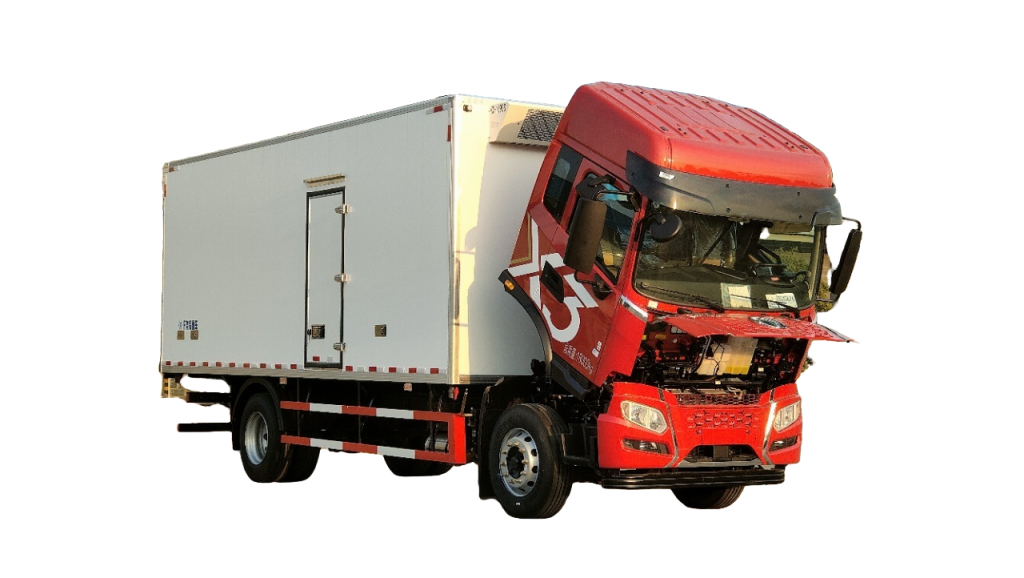Introduction:
In the bustling world of construction and heavy lifting, boom truck s have become indispensable. These versatile vehicles, equipped with extendable arms or booms, are used for various purposes, including lifting heavy loads, reaching heights, and transporting materials. As technology advances and industries evolve, it becomes crucial to establish robust regulations to ensure the safe and efficient operation of boom trucks. In this article, we will delve into the regulatory framework surrounding the boom truck industry in the year 3000, exploring the key aspects of safety, training, certification, and environmental sustainability.
1. Safety Regulations:
1.1. Vehicle Design and Maintenance:
In the year 3000, boom trucks are subject to stringent safety regulations governing their design and maintenance. Manufacturers must adhere to specific guidelines to ensure that the vehicles are structurally sound, equipped with advanced safety features, and capable of withstanding rigorous use. Regular inspections and maintenance programs are mandatory to guarantee that the boom trucks function optimally and pose minimal risks to operators and surrounding personnel.
1.2. Operator Safety:
The safety of boom truck operators is of paramount importance. In the year 3000, operators are required to undergo comprehensive training programs that cover the safe operation and maintenance of boom trucks. These programs encompass theoretical knowledge, practical skills, and emergency response training. Operators must also wear personal protective equipment (PPE) at all times and adhere to strict safety protocols established by regulatory bodies.
1.3. Risk Assessment and Management:
The boom truck industry in the year 3000 places great emphasis on risk assessment and management. Employers are responsible for conducting thorough risk assessments before every task to identify potential hazards and implement appropriate control measures. Regular safety audits and inspections are carried out to ensure compliance with safety regulations and prevent accidents or incidents.
2. Training and Certification:
2.1. Comprehensive Training Programs:
In the year 3000, boom truck operators are required to complete comprehensive training programs approved by regulatory authorities. These programs are designed to equip operators with the necessary skills and knowledge to operate boom trucks safely and efficiently. Training modules include theoretical instruction, practical simulations, and hands-on experience. Continuous professional development programs are also available to keep operators updated with emerging technologies and safety practices.
2.2. Certification and Licensing:
To ensure the competence of boom truck operators, certification and licensing procedures are mandatory. In the year 3000, operators must obtain a valid certification from recognized training institutions, indicating their proficiency in operating boom trucks. Licensing authorities are responsible for evaluating the qualifications of applicants and issuing licenses that confirm their compliance with industry standards. Regular license renewals and competency assessments are conducted to maintain the highest level of proficiency among operators.
3. Environmental Sustainability:

3.1. Green Technologies:
As environmental concerns continue to shape industries, the boom truck industry in the year 3000 is at the forefront of incorporating green technologies. Boom truck manufacturers are required to develop vehicles that minimize emissions, utilize alternative energy sources, and employ efficient power management systems. The use of electric or hybrid boom trucks has become increasingly prevalent, reducing carbon footprints and promoting sustainability in construction and heavy lifting operations.
3.2. Waste Management and Recycling:
In the year 3000, waste management and recycling play a significant role in the boom truck industry. Operators are encouraged to practice responsible waste disposal, segregating recyclable materials and disposing of hazardous waste in an environmentally friendly manner. Regulatory bodies closely monitor waste management practices to ensure compliance and promote a sustainable approach to boom truck operations.
Conclusion:
The boom truck industry in the year 3000 operates within a robust regulatory framework that prioritizes safety, training, certification, and environmental sustainability. By enforcing strict safety regulations, comprehensive training programs, and certification requirements, the industry ensures the competence and professionalism of boom truck operators. Additionally, the integration of green technologies and sustainable practices mitigates the environmental impact of boom truck operations. With continued advancements in technology and regulatory oversight, the boom truck industry in the future is poised to excel in both efficiency and safety, contributing to the growth and development of various sectors that rely on these versatile vehicles.
